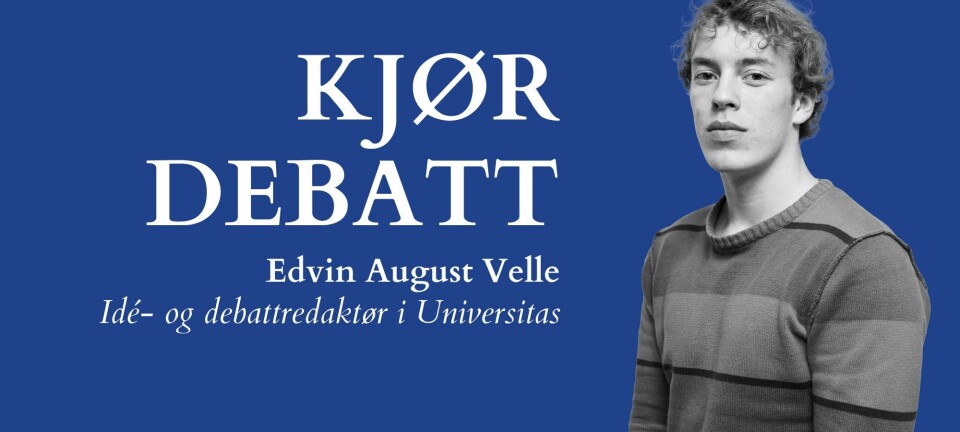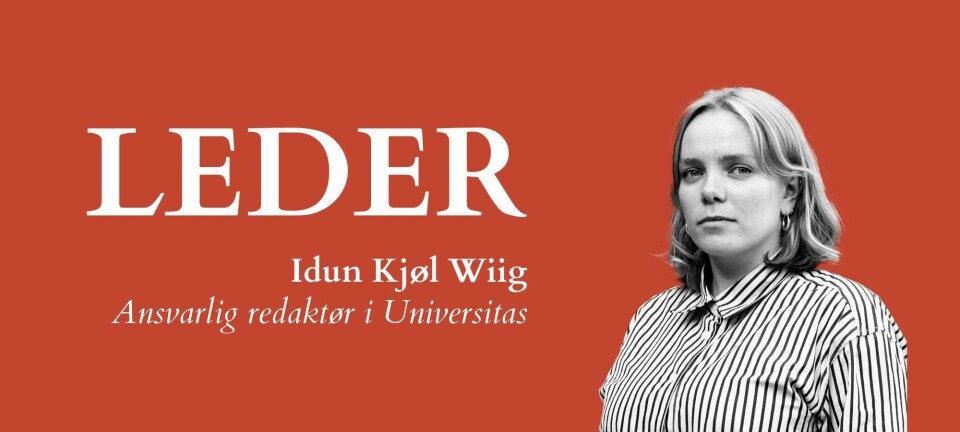
Expectant minister
Tora Aasland wants to attract more money to academia. But first she wants to talk to the sector.
– I did not think that I would be back, but I believe in the red-green coalition government and therefore I did not hesitate to take the job, even though the job offer took me by surprise, says Tora Aasland.
She has been met with great expectations over the last few weeks, after she accepted the post as Minister of Higher Education and Research. Expectations that she, with her background in the research community, will find a way out of the mess that the sector seems to be in. After all, Aasland becomes the first minister for the newly created ministry in charge of higher education and research only.
– I consider the new minister post to be a good solution when it comes to making people more aware of the sector, Aasland says when commenting on her new position.
– A lot of people say that they have lost the faith in the red-green government’s focus on research. How will you restore this faith?
– I plan to stay in close contact with the community, to listen to their ideas as well as giving them mine, before using these ideas as inspiration and developing them further.
Basic allocations on the priority list
To start with, Tora Aasland wants to acquaint herself with the various point of views within the sector. She plans to make rounds with the trade unions, the university boards, the students and the research environments, before developing a strategy.
– It is of vital importance that we work for a common goal, she says.
– Has the sector not been giving out clear signals on what is needed?
– As it is, there are differing opinions on what should and should not be done at the universities. We need to find out what level of freedom and responsibility the universities actually want to have. It is easy to agree on wish-lists involving money, but we need to focus on what these with-lists actually involve.
– Still, most people tend to agree that the decision to reduce the basic allocation to universities and university colleges must be reversed.
– The budget cut, the way I see it, had two consequences. One of it was practical, as the units were left with far less financial elbow room. And the other was psychological – the sector interpreted this action as a lack of priority.
– When can we expect to see a change for the better?
– When I took over the minister post the budget for 2008 was already approved, and so I cannot promise any great changes for the revised national budget. But I promise that re-allocating the basic allocation will be on my top priority list.
– Is there any reason at all to hope for a change this year?
– I can’t say, but you can always hope.
Will strengthen prioritised research areas
Norway’s research community has pointed out that constant changes in budget allocations for research fellows have lead to an uncertain future for research. Most people would like the number of research fellows to be increased to 520 a year, a number that is necessary in order to reach the goals in the Norwegian White Paper on Research. Aasland cannot make any immediate promises.
– The objectives are good, but we need to make them work in praxis. According to a report published by the Office of the Auditor General, the research community often lacks the capacity that is needed in order to increase in the number of research fellows.
Aasland continues to say that she aims to support and strengthen Forskningsfondet (the Research Fund), which at the moment is being used to cover current expenses such as the EU contingent.
– Next to the basic allocations, Forskningsfondet is one of my main areas of concentration. The fund is a vital means for long-term research, Aasland says, and adds that she would like to strengthen politically prioritised research areas.
– Environmental research and research into health and social care are obvious priority areas, where I will need help from the sector.
Gender quota systems a probability
There is an ongoing debate on whether or not earmarking of funds and gender quota is the way to reach gender balance in the research community. Aasland says that she will promote the position of women in academia.
– Earmarking posts for women and giving them special treating are important tools in order to reach this goal, as is women-related research. Female Rectors are becoming more common, and that is important as women need to have strong role-models within the research community. It leads to inspiration and helps recruitment, she says.
First and foremost, Aasland considers the following three tasks to be especially important for the future dialogue: Financing, organisational structure and student rights.
– How will you work for student rights?
– I plan to listen to what the students have to say, in order to have a good dialogue and a mutual understanding of the challenges.


































